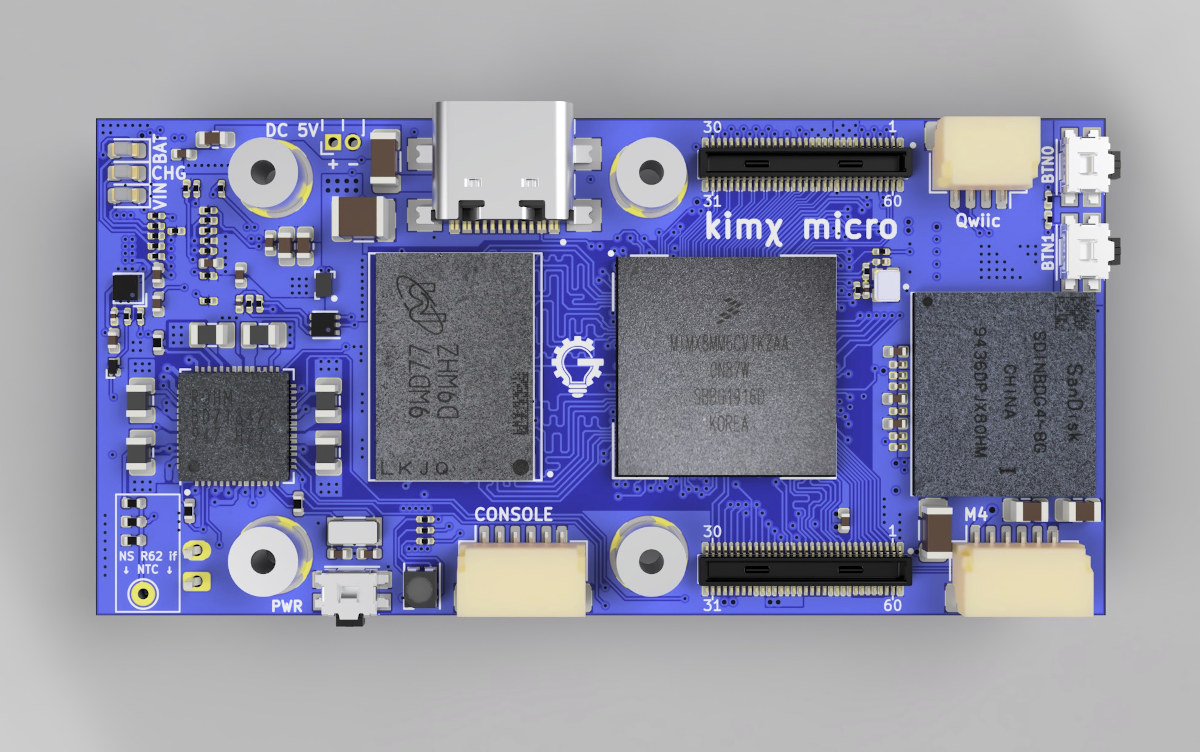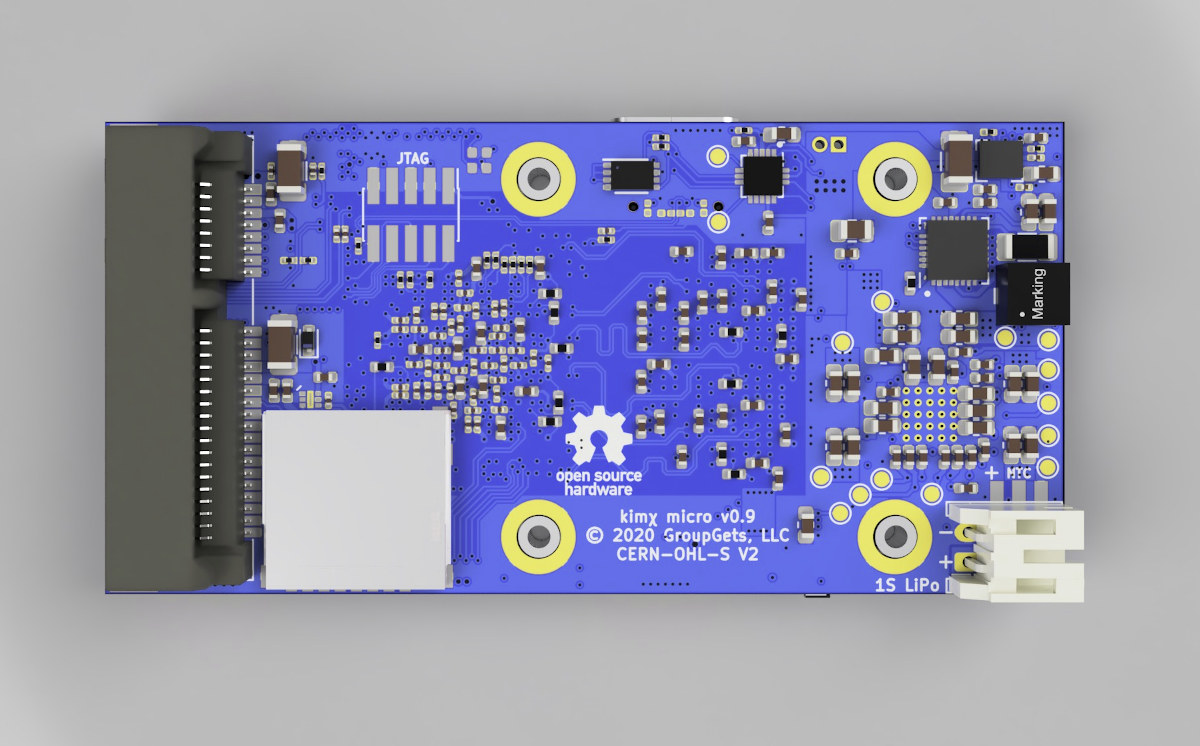The Raspberry Pi Zero (W/WH) board is great because of its size, price tag, and software support, but processing power is limited with Broadcom BCM2735 SoC only offering a single ARM11 core clocked at 1 GHz.
There are already some more powerful boards in a similar form factor include Banana Pi M2 Zero or FriendlyELEC NanoPi Duo2 both equipped with an Allwinner quad-core Cortex-A7 processor, but there’s another upcoming board with NXP i.MX 8M Mini quad-core 64-bit Cortex-A53 processor. Meet Kimχ Micro (pronounced Kimchi Micro).

Kimχ Micro (preliminary) specifications:
- SoC – NXP i.MX 8M Mini single to quad-core Cortex-A53 processor @ up to 1.8 GHz, Cortex-M4F real-time core @ up to 400 MHz, Vivante GC NanoUltra 3D GPU + GC320 2D GPU, VPU for 1080p60 video decoding and encoding; (Single and dual-core version of NXP i.MX 8M Mini processor are also compatible)
- System Memory – 2GB LPDDR4
- Storage – 8GB eMMC flash, MicroSD card socket, serial EEPROM
- USB – 1x USB 2.0 Type-C port for power and data
- Expansion
- mPCIe socket for wireless cards (e.g. WIFi, 4G LTE, or LoRa).
- Sparkfun Qwiic header
- 2x 60-pin high-density I/O headers with Ethernet, USB, camera, display, SAI audio, I2C, SPI, GPIO, PCIe, etc…
- Debugging – 10-pin JTAG header footprint, Cortex-M4 UART “M4” header, Cortex-A53 “Console” header
- Misc – Power button, button 1 (boot selection) and button 2 (user button), R, G, and B LEDs
- Power Supply
- USB PD via USB-C port, NX20P3483UKUSB PD and Type-C high-voltage sink/source combo switch and PTN5110NHQZ TCPC compliant USB Power Delivery (PD) PHY IC
- 5V unpopulated header
- 2-pin header for 1S LiPo Battery; on-board PMIC, charging, fuel gauge, and battery protection ICs
- Dimensions – 65 x 32 mm (FYR – Raspberry Pi Zero: 65 x 30 mm)

Now that we could have a look at the specifications, apart from the size, Kimx Micro is quite different from the Raspberry Pi Zero board. Video output is missing from the board (except via high-speed headers), and you’ll need a USB-C hub to connect USB devices so it’s definitely not a board for (kids) education, but for more advanced users. Besides more powerful 64-bit Arm cores, the SoC also includes a real-time core, offers more flexibility with wireless connectivity via the mPCIe socket, and many more I/Os via the high-speed expansion connectors.
Power supply options are quite interesting too, as I think it’s the first board of this type (tiny Linux board) to offer USB PD power/charging, and it also supports LiPo battery power. Another advantage is that it is open-source hardware, and that’s how I managed to derive somewhat detailed specifications since documentation is WiP: reading the BoM and KiCad schematics & PCB layout which you’ll find on Github. Everything is licensed under CERN-OHL-S V.2. Linux will be supported via a layer for the Yocto Project.
GetLab received the first PCB samples in late April, and are still working on debugging the board, and possibly making a new revision with fixes. Once the board is ready, it will be offered through GroupGets platform.

Jean-Luc started CNX Software in 2010 as a part-time endeavor, before quitting his job as a software engineering manager, and starting to write daily news, and reviews full time later in 2011.
Support CNX Software! Donate via cryptocurrencies, become a Patron on Patreon, or purchase goods on Amazon or Aliexpress




